The temperature should be between 34 – 36 °C for the first few days.
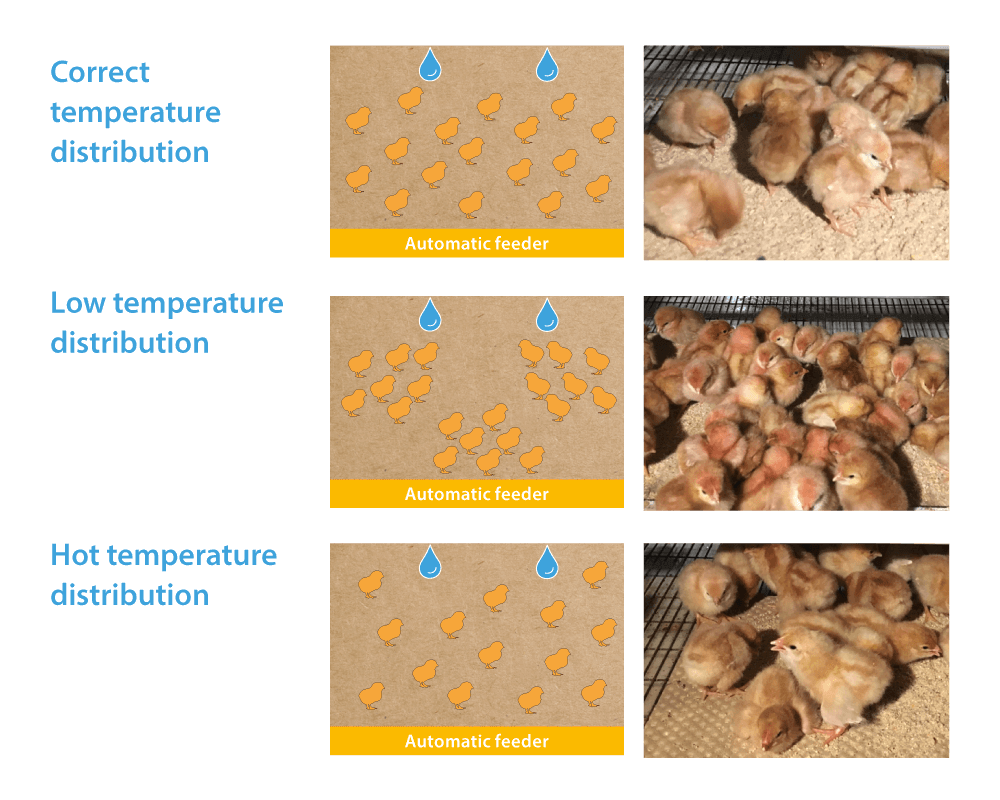


Set the height of the drinkers so the chicks can drink easily. 360-activated nipples are preferable in rearing houses.
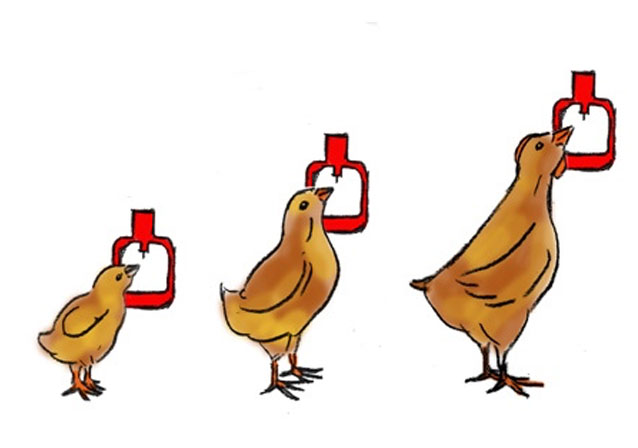 If not available, and especially with infrared beak treated chicks, we recommend using cups or other extra drinking systems during the first 5 – 7 days. Reduce the water pressure in the drinking system to create a hanging drop at chick eye level. Trigger the nipples or cups during the first 3 – 4 days to encourage chicks to drink. flush the lines just before housing the chicks and daily for the first 4 days. Chicks will refuse hot water (>25 °C).
If not available, and especially with infrared beak treated chicks, we recommend using cups or other extra drinking systems during the first 5 – 7 days. Reduce the water pressure in the drinking system to create a hanging drop at chick eye level. Trigger the nipples or cups during the first 3 – 4 days to encourage chicks to drink. flush the lines just before housing the chicks and daily for the first 4 days. Chicks will refuse hot water (>25 °C).




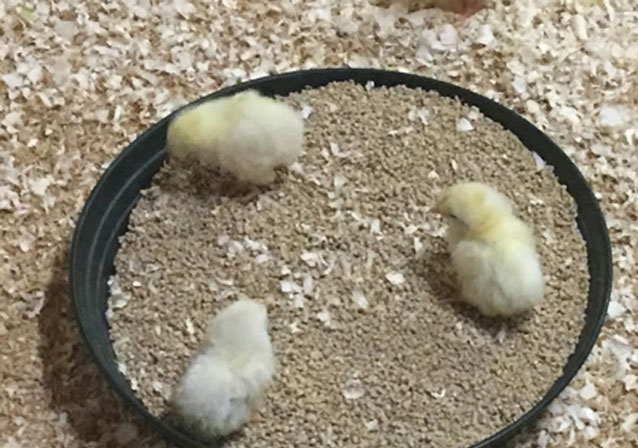

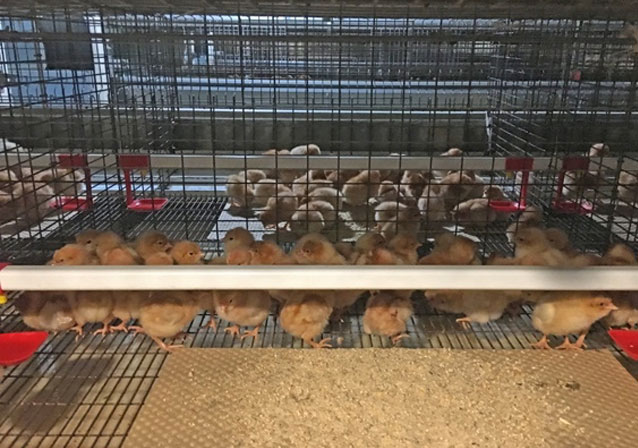
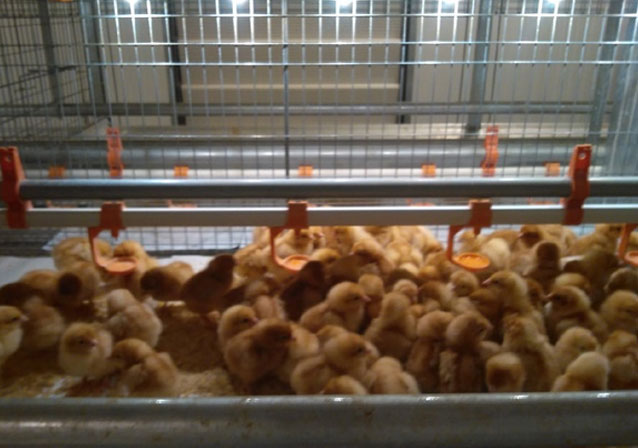
Crop fill measurement is a good tool to check if the chicks are eating in the first two days of life.
If the result is below target, check the brooding conditions and take corrective measures.

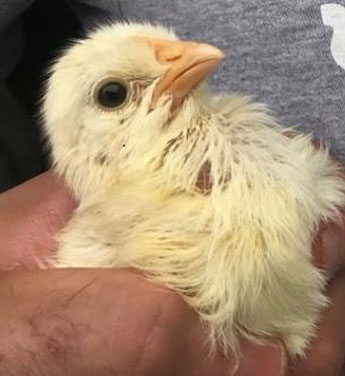
Chick temperature is between 40 – 41 °C after the moment of full homeothermy. During the first week of life chicks are unable to control their body temperature and it varies according to the ambient temperature. This information can be used to adjust house temperatures optimally. Use modern ear thermometers (see picture).
Important! A chick’s body temperature does not correlate with the current temperature but with the temperature of the last few hours.


Beak treatment is an important cannibalism/pecking prevention measure in poultry management, especially in open houses with high light intensity. While various methods of beak treatment may be used: the objective is to treat the beak in a uniform manner that will permanently retard future beak growth. Improper beak treatment procedures may result in permanent damage to overall flock performance.


The beaks of day-old chicks can already be treated at the hatchery using infrared technology. This method can provide more uniform beak treatment because it is performed by a machine and not by different crews. The beak remains intact until 10 – 21 days and then the treated portion separates. Because of this process, chicks will need extra care during the brooding period. Pay attention to:
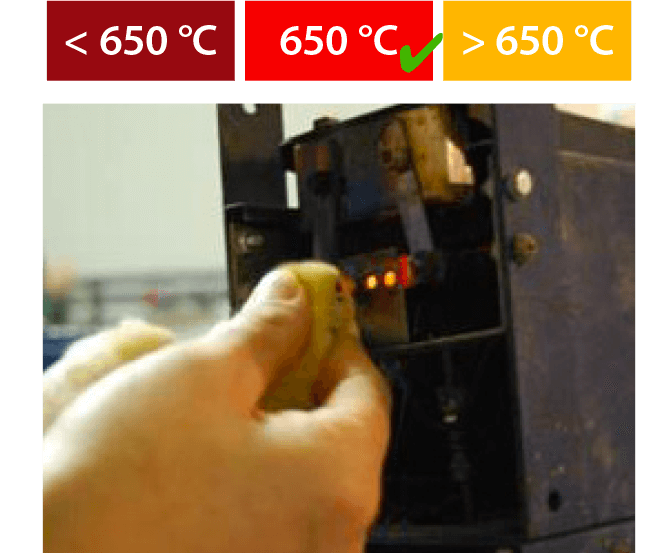
The conventional method of beak treatment is to treat the beaks with a hot blade. Beak treatment should ideally be performed in the first 7 – 10 days. It is a delicate and precise manual procedure. Ensure these conditions are fulfilled before starting the process:

Special care should be provided to the chicks in the days following beak treatment:
Welcome! Your admission is granted, please allow for 2 seconds as the door to our VIP room is opening for you right now! Please come in!
Don't have an account? Sign up now
